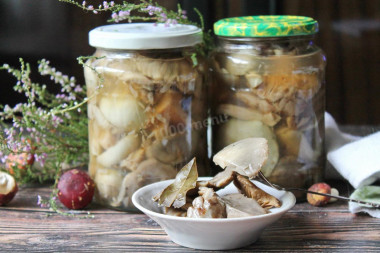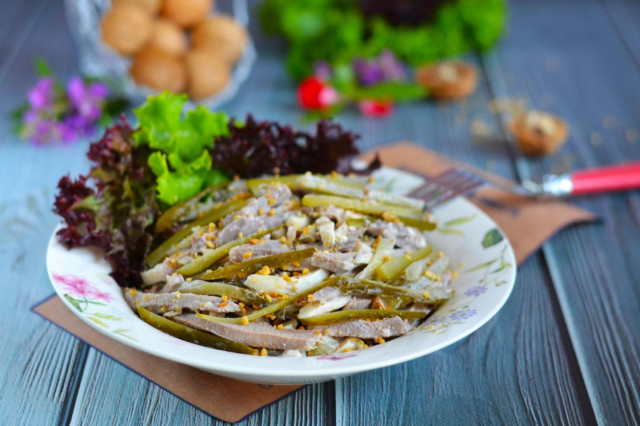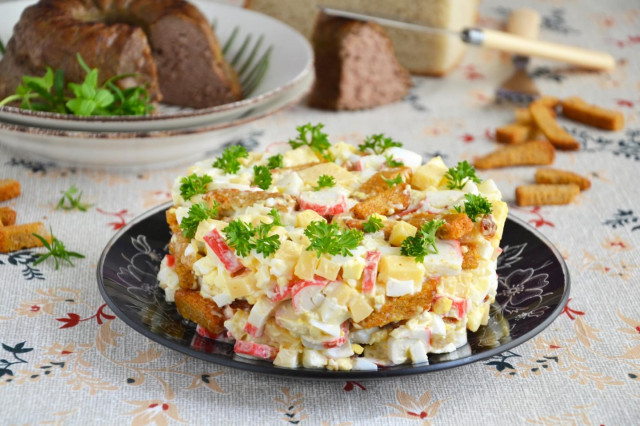Composition / ingredients
Step-by-step cooking
Step 1:

How to pickle cheese for the winter? Measure the products according to the list. Prepare the mushrooms. To do this, sort out the fresh cheese, remove the wormy, loose and those that cause you doubts. After all, there are quite a lot of false types among the raw tooth and one is enough to be poisoned by all the others.
Step 2:

Put the mushrooms in a basin and fill them with cold water from the shower. It is from the shower, since they can crumble under the running water. It is advisable to do this within 12 hours after harvesting, since after a day they begin to crumble and darken. Leave it like this for 5-6 hours. This will get rid of debris and sand that are firmly stuck to the raw teeth. Carefully remove them from the water and put them in a deep saucepan.
Step 3:

Fill them with cold water, bring to a boil and boil the mushrooms for 10 minutes, drain the broth and rinse in cold water. Do not worry, the raw teeth have already become dense and will not crumble. Do this two more times.
Step 4:

Pour water into a stainless steel saucepan and add salt. It should be coarse ground, as fine can be over-salted.
Step 5:
Add sugar to the pan and stir.
Step 6:

Put bay leaves, cloves, pepper in a saucepan with a solution of salt and sugar and put on medium heat, bring to a boil.
Step 7:

Pour in the vinegar and boil for 2 minutes.
Step 8:

Put the boiled raw vegetables in a saucepan and cook for 15 minutes.
Step 9:

Wash the jars and lids in hot water with baking soda, and then rinse thoroughly. Sterilize them over steam for 10 minutes, placing them in a special ring on the pan. Or sterilize them in a microwave oven by pouring water 2 centimeters high and warming up at full power for 4-5 minutes. Boil the lids in water for 10 minutes over medium heat.
Step 10:

Spread the ready-made cheese on the ready-made jars to the hangers, and pour the marinade all the way to the top. Close the lids tightly, turn over and wrap until completely cooled. Store the pickled cheese in a dry, cool, dark place. Enjoy your meal.
For cooking, it is better to use filtered or bottled water that is neutral to taste. If you use tap water, keep in mind that it can give the dish an unpleasant characteristic taste.
Remember that spices such as salt, sugar, as well as vinegar and its substitutes are used in recipes for winter preparations not only for taste, but primarily as preservatives. Therefore, in no case should you reduce the concentration of salt and sugar, and also replace vinegar (essence) with a weaker concentration than indicated in the recipe, otherwise vinegar (salt / sugar) will not show their preservative properties and the workpiece will be spoiled.
Caloric content of the products possible in the composition of the dish
- Carnation - 323 kcal/100g
- Bay leaf - 313 kcal/100g
- Granulated sugar - 398 kcal/100g
- Sugar - 398 kcal/100g
- Wine vinegar (3%) - 9 kcal/100g
- Vinegar 9% - 11 kcal/100g
- Balsamic vinegar - 88 kcal/100g
- Apple vinegar - 14 kcal/100g
- Vinegar - 11 kcal/100g
- Black pepper peas - 255 kcal/100g
- Syroezhki - 17 kcal/100g
- Salt - 0 kcal/100g
- Water - 0 kcal/100g

